Science
Yellapragada Subbarow: Why India Should Honour Him In More Ways Than One
Aravindan Neelakandan
Apr 29, 2023, 12:53 AM | Updated May 01, 2023, 11:43 AM IST
Save & read from anywhere!
Bookmark stories for easy access on any device or the Swarajya app.
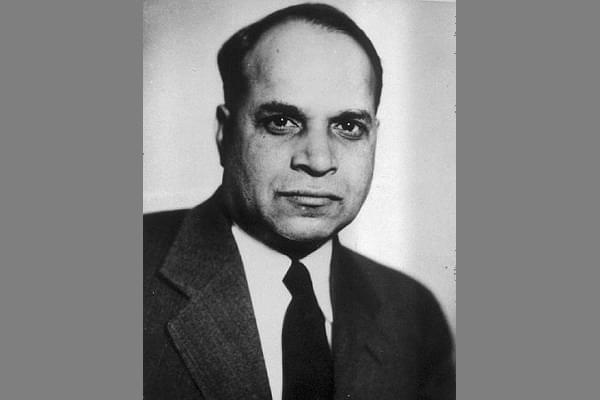
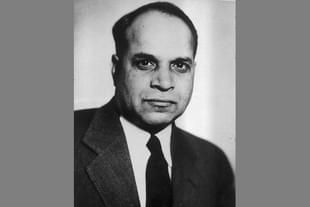
Yellapragada Subbarow (1896-1948) had entered the United States for medical research. He had failed to earn his medical degree because he refused to wear British manufactured surgical gown and instead went for Gandhi’s home spurn Khadi ones.
His research then was with Ayurveda. He wanted to integrate the Tridosha concept of Ayurveda with the modern medicine. But laboratories were not adequately equipped and so he wanted to go to the United States.
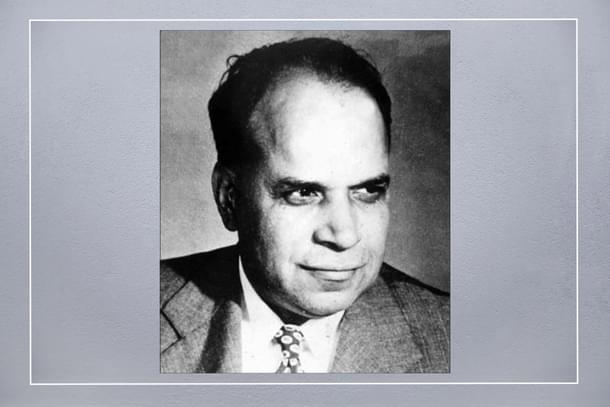
But his Ayurvedic research interest was more a liability when he applied for enrolling as research student at Harvard. He sneaked in by showing his degree in anatomy but later found that that too was considered as not matching the standards of Harvard.
Doing odd jobs he finished his PhD. When he worked, though eligible to have co-workers, he could not.
He was discouraged from publishing papers. When he discovered a colorimetric test for the presence of phosphorous, he was forced to give the credit to Fiske though he did the major work.
The bio-molecule Adenosine Triphosphate (ATP) was discovered in 1929 with a basic understanding of its role in energy by Subbarow while he was a research student under Fiske at Harvard. But he was not only discouraged but credit for most of his work was taken by Fiske.
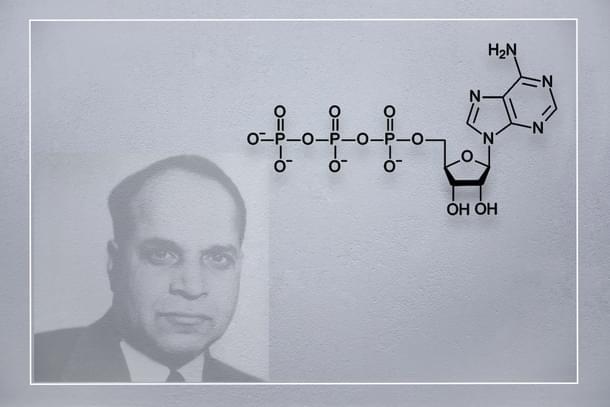
While Subbarow was discouraged from publishing for the same independent discovery, the German chemist Karl Lohmann became the discoverer of ATP.
Eminent geneticist Krishna Dronamraju points out:
Subbarao's colleague and fellow student at Harvard, George Hitchings who shared the 1988 Nobel Prize in Physiology or Medicine with with Gertrude Elion said, "Some of the nucleosides isolated by Subbarao had to be rediscovered years later by other workers because Fiske, apparently out of jealousy, did not let Subbarao's contributions see the light of the day." In his Nobel Prize Lecture Hitchings wrote, 'I was caught up in the Fiske-Subbarao program, and ... after the discovery of phosphocreatine, this group had detected and isolated adenosine triphosphate.The Life and Work of JBS Haldane, OUP, 2017, p.152
In the tracking of another very important compound, phosphocreatine, he had voluntarily played down his role to enable his co-discover to get promotion. Cyrus Hartwell Fiske (1890-1978) his co-discoverer did not care to return this generosity.
In 1990 among when The Scientist magazine ranked the pre-DNA discovery science papers that had remained relevant even then in scientific research it was Dr. Subbarow's colorimetric determination of phosphorous that came first.
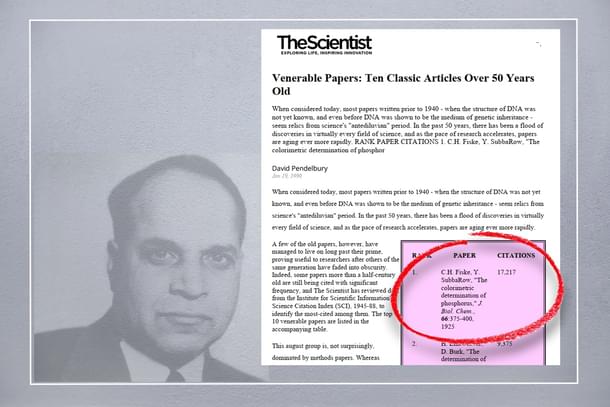
Meanwhile a tragic news reached him. His only son had died of erysipelas – a bacterial disease.
After repeatedly experiencing discrimination at Harvard he had joined Leardale laboratories in 1940. There he was working on antibiotics.
In 1942, Subbarow recruited another reject of the system – plant physiologist Benjamin Duggar. Duggar was then 70 years old and hence he was retired from University of Wisconsin. He was then repeatedly rejected for both teaching as well as for research. Subbarow saw in him a valuable asset for studying fungi to search for antibiotic substances. Duggar’s father was a confederate army medical officer.
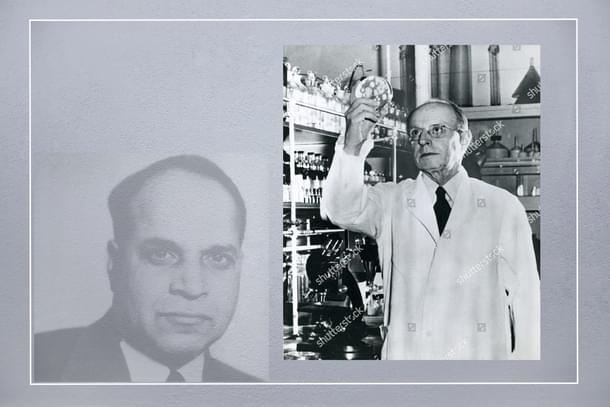
Thus, a son of an army officer whose army fought for maintaining slavery was recruited and worked under an Asian Indian.
The trait that attracted Duggar to Subbarow was his keen eye for identifying fungi. The duo started working with samples collected from various areas.
One mould sample collected from the soil of hayfield on the University of Missouri showed an attractive golden colour. Duggar had assembled all the curious moulds he got as ‘ultra-moulds’.
Among these moulds Subbarow identified this mould and focussed on it. Labelling the golden mould as A-377 Subbarow and his team got into its biochemical and bacteria related properties.
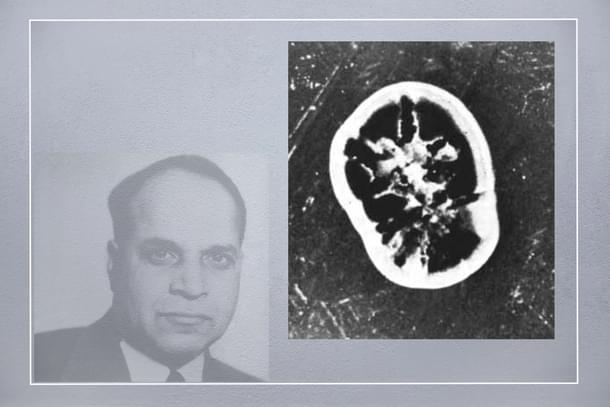
Subbarow identified talent and delegated the works in a very systematic way.
He chose Joseph G. Niedercorn, a synthetic chemist who was a leather technologist, for fermentation. Niedercorn protested initially. He was not a microbiologist. ‘You can learn’ said Subbarow.
He found the demands of Subbarow like growing the golden hued mould in five gallon stirred bottles impossible. ‘At least try’, said Subbarow.
He picked up another young talent, a biochemist, Charles Pidacks, for isolating antibiotic chemicals from the ferment. Pidacks though had worked with Penicillin and Streptomycin, could not much progress with the A-377.
Here Subbarow brought in George Krupka. Krupka was a college graduate janitor and a technician with no great theoretical science knowledge. He was trained by Subbarow. He worked hard and boosted the yields. Meanwhile the management of Leardale Laboratories gave two weeks to get crystalline results or shut shop. The team of odd scientists and technicians under Subbarow accomplished it just in time.
But his woes were far from over.
By November 1947 the antibiotic was ready. In the lab tests ‘on 46 dogs, 24 cats, 36 rabbits, 109 guinea pigs, 559 rats, 760 mice and 18 chicks’ it was found to be safe and quite effective against a wide variety of microbial diseases- and among the diseases it successfully fought against was erysipelas – the disease that killed his only son.
The animal trials were done by two scientists of Subbarow's team - Harold Cox and Sam Wong. They had pointed out an important aspect. Despite its virucidal properties, it was not effective against flu, polio and rabies. But it was effective against a type of pneumonia and a venereal disease Lymphogranuloma venereum (LV)– for which both no curing drugs were then known.
When the human trials were done, the results that came from the prestigious new drug was pitted against Penicillin and Polymyxin and was pronounced as inferior to both.
Now Subbarow decided to conduct clinical tests with another great science achiever and social activist of his time in the United States - Dr Louis Tomkins Wright, of African-American heritage.

Dr. Wright was a man who had fought discrimination at every stage of his medical career. He did not taken them lying down. He fought back by organising right-minded colleagues.
When he joined the famous Harlem hospitals in 1920, he was the first African-American doctor there. Despite his demonstrated brilliance he was given the lowest possible position a doctor could be given.
Yet four white doctors resigned against the appointment of a Black doctor. Despite the hurdles, by 1943 he had become the first director of surgery at Harlem Hospital. Even as he fought all the way, he also flowered into a fine researcher in the field of antibiotics. He had published nearly 90 papers in peer reviewed medical journals of which thirty five were antibiotics study.
Subbarow invited Dr. Wright and showed him the results of lab trials of Cox and Wong.
Dr. Wright was convinced enough to try A-377 with 25 patients. The trial began on 22 January, 1948 with 25 patients. It was administered orally to patients affected by the viral venereal disease LV. After 16 weeks with fast recovery and no relapse, the declaration was made – we have a new miracle drug.
At the same time though, Dr. Subbarow was also undergoing his own personal crisis.
Spiritual quest always played an important role in his life. During his student days he used to regularly visit Chennai Sri Ramakrishna Mission.
Though interested in Mathematics, it was because a senior monk of the mission told him to become a doctor, that he chose medical field. He wrote later that he did not exactly know why he chose medicine but he was told to choose that by monk of Sri Ramakrishna mission.
Later, he abandoned Advaita though.
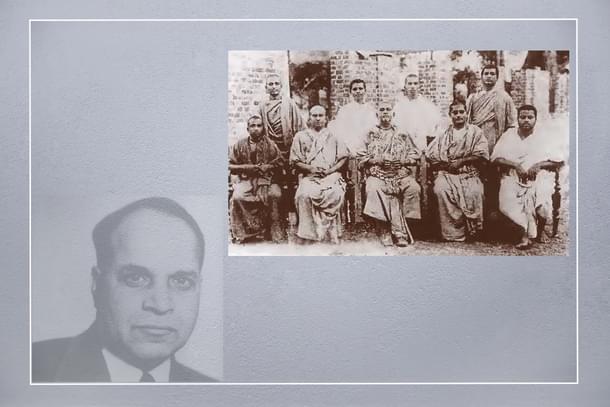
The US Government had the policy that Hindu Indians were not eligible for becoming the US citizens. Subbarow was living with a student visa. He also had to carry alien registration card with his left thumb mark on it. He had also emotional problems with his wife and their only child had passed away.
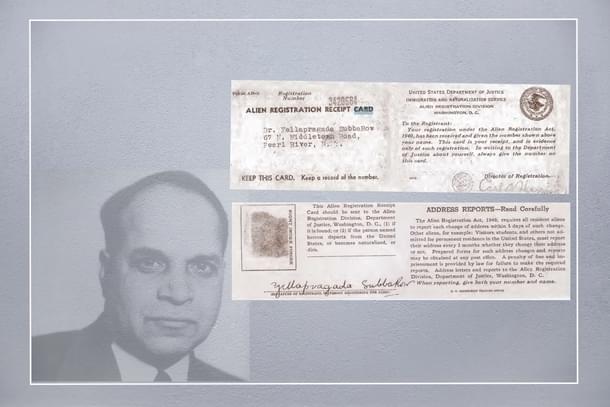
While in Boston he had been attending Unitarian Church and listening to the sermons. John Haynes Holmes, was a very humanist Unitarian pastor who had campaigned in favour of India’s Independence movement and made the name Gandhi reach all his listeners.
Subbarow was attracted to Unitarian doctrines. Interestingly, Unitarian doctrine as it evolved in the US had in it streams of Advaita through that famous Unitarian Minister Ralph Waldo Emerson and later Swami Vivekananda.
When Subbarow was in New York his close colleague Doris McKenzie, a devout Christian saw in his Unitarian leaning an opportunity to convert him to Christianity. With her he had developed an unrequited love. Once he realised it was unrequited he transformed it into complete professional camaraderie.
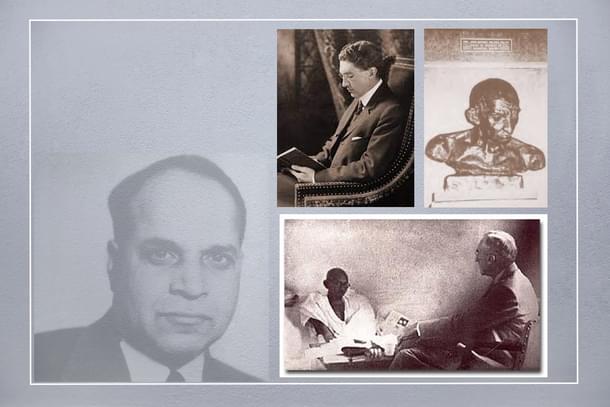
When Doris McKenzie asked Subbarow to attend her Baptist Church he did attend the sermons. He even supported its ‘education’ programme. But in his detailed letter to the pastor make two things very clear – one was that he did not need an intermediary priest or pastor and that he was into his own inner self-priesthood.
The second thing was that for his acceptance of Jesus as even the greatest spiritual leader he had known, he ‘was not forsaking the great spiritual qualities he had known in his Indian faith’ (Gupta & Milford).
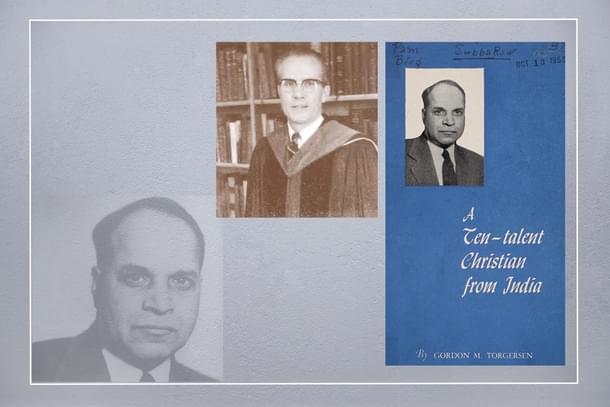
What is very interesting is that in a letter to his relative he had stated that he had lost faith in Advaita because of what he perceived as the illusory nature of Sankara.
At the same time based on astrological calculations he wrote bluntly to his father-in-law who had written to him about the birth of his son that he would die soon.
Corresponding to his abandoning of Advaita was more dangerous abandoning of evolutionary view of life. He sees life as a vital entity placed by a Creator. He wrote to the Baptist pastor:
At one time it was hard for me to conceive that man acquired an inner spirit and thus became completely differentiated from the rest of nature by his capacity of transcending nature and transcending himself, while science assumed that he is another step in evolution, also in mind. It was not until I was studying liquid crystals. These have all the physical properties of a unicellular organism but we have to assume that life really did come from the interstitial spaces (Eddington) and somehow entered inorganic materials such as liquid crystals. Thus God introduced complete breaks in creation.Letter to Pastor Torgersen dated 16-March-1948 months before his death, from: Raji Narasimhan, Yellapragada SubbaRow : A Life in Quest of Panacea, Vigyan Prasar, 2003
It was an odd combination of panspermia and vitalism together with creationist intervention.
His inner struggle was also related to his still pending citizenship issue. And then in July 1946 the US allowed Indians to apply for citizenship. In July 1947 he started the process which would take two years to grant him citizenship.
Meanwhile he was also working with one of the greatest names in modern medical history - Sidney Farber the father of chemotherapy.
Subbarow had worked on synthesizing Folic acid step by step and in that he had synthesized molecular mimics of Folic Acid.
A child, two-years-old, was diagnosed with Leukaemia and had been admitted in the hospital where Farber worked. That was in August 1947.
Farber had requested such molecular mimics from Subbarow after Farber found that Folic Acid administration in terminally-ill cancer patient accelerated cancer. The molecular mimics had been found to disrupt the metabolism of Leukaemic cells in mice.
Such a chemical that was first supplied by Subbarow’s lab was called pteroylaspartic acid (PAA). But it did not have any effect. Subbarow worked further and produced a chemical with minor change – aminopterin and sent it to Farber. This was on 28 December 1947.
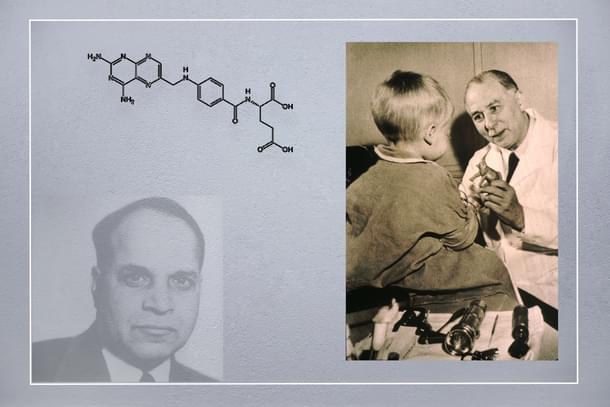
By January 1948 the child had its Leukaemia remission – a first in clinical history then. Yellapragada Subbarow died of heart attack on August 9, 1948. He was 53.
He died as a student migrant from India with no American citizenship. His will had made it clear that despite strained relations, he had made his wife his inheritor. His family, his bereaved mother and widowed wife requested his mortal remains. But they had been taken away from funeral company by Baptists and they refused to part with it. Pastor Torgersen 'resorted to dissimulation in using Subbarow's memory to collect funds for missionary work.'
In its April 1949 issue ‘Scientific American’ published a special story on Aureomycin. The article pointed out:
The viral diseases that have responded to aureomycin are primary atypical pneumonia and a particularly recalcitrant venereal disease known as Lymphogranuloma venereum. The latter was one of the earliest diseases treated with aureomycin, and the results were so successful that the investigators concluded: here for the first time is a cure for a virus disease in human beings.Leo Rane and Dora Rane, Aureomycin, Scientific American , April, 1949, pp. 18-23
It mentioned Subbarow in the passing in one line:
The mold was discovered by the mycologist B. M. Duggar, a member of the research unit organized by Y. Subbarow, the late, brilliant biochemist, in the Lederle Laboratories, a division of the American Cyanamid Company, at Pearl River, N. Y.
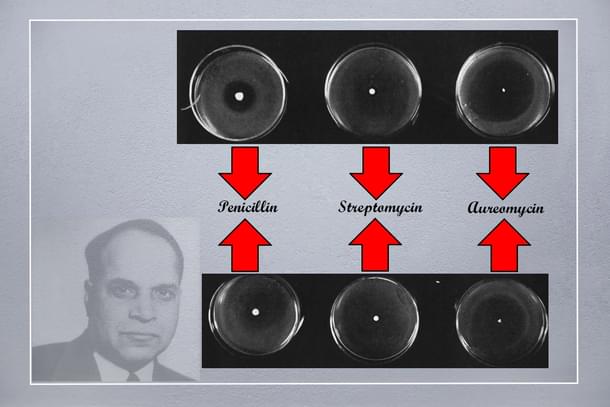
Dr. Wright was not mentioned at all.
One should contrast this with another ‘scientific study’ conducted by United States Public Health Service (USPHS). It started in 1932 and went on for decades. This was the notorious ‘Study of Syphilis in the Untreated Negro Male’. When it was finally exposed, that was done not by scientists but by journalists.
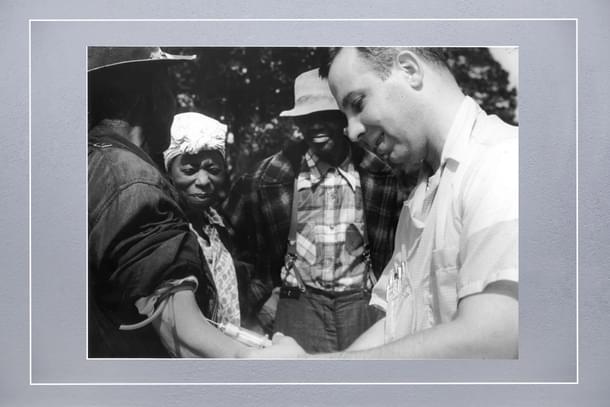
As an Indian biochemist and a Black surgeon helped the United States in particular and world at large to remove misery of painful diseases – from Leukaemia in children to Venereal diseases in general population, in Tuskegee the USPHS was identifying Blacks with syphilis and was deceiving them about the nature of the disease and while left untreated, they were told they were getting treated. They were getting treatment for ‘bad blood’!
What is even more painful is this fact. When these men under study were drafted during Second World War the drafting board was supplied by the US Public Health a list of 256 men with syphilis and was asked not to treat them. The board silently agreed without a protest. In 1950 in the medical journal of armed forces of the US, various treatment schedules for the treatment of Syphilis with Penicillin and Aureomycin had been published.
Yellapragada Subbarow himself never obtained the kind of fame he deserved in medical history. Louis Tompkins Wright was not much known outside his Black community. But even the benefits of their efforts were restricted from reaching beneficiaries of the ‘coloured’ races.
India today is in a unique place to honour Dr. Yellapragada Subbarow in ways more than one.
In 1953 a plaque was unveiled by his mother Venkamma. Government of India issued a stamp during his centenary. A detailed biography with a collection of important photos, was published Vigyan Prasar in 2003. Even an Amar Chitra Katha comics is available on his life. A fungus genus Subbaromyces has been named in his honour.
But is this all enough?
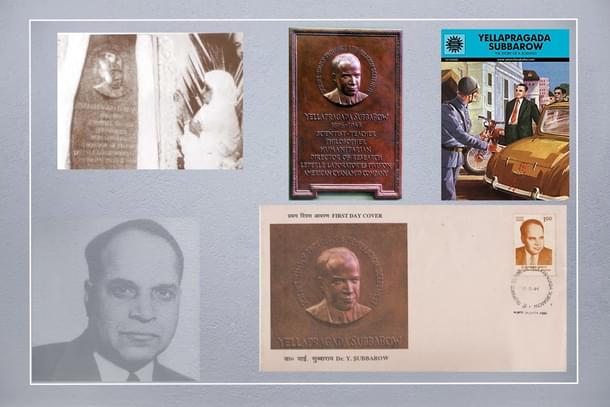
A strong case for posthumous Bharat Ratna has been made by late cellular biologist Puspha Bhargava and has been published by Swarajya in 2018. A
part from that in the biology and biochemistry textbooks he should be introduced to our students as the discoverer of ATP. His war against pain and human misery that transcended all man-made barriers should be made part of the curriculum. Along with him India should also honour that great Black surgeon, who also worked with Subbarow, Dr. Louis Tompkins.
References:
Raji Narasimhan, Yellapragada SubbaRow: A Life in Quest of Panacea, Vigyan Prasar, Govt of India, 2003
Sikharam Praanna Kumara Gupta & Edgar Milford, In Quest of Panacea: Successes and Failures of Yellapragada SubbaRow, Evelyn Publishers, 1987
Siddhartha Mukherjee, The Emperor of All Maladies: A Biography of Cancer, Scribner, 2011
Gerald Posner, Pharma: Greed, Lies, and the Poisoning of America, Avid Reader Press/Simon & Schuster, 2021
Leo Rane and Dora S. Rane, Aureomycin, Scientific American, April, 1949,
Aravindan is a contributing editor at Swarajya.




